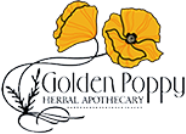ROSEMARY HAS LONG BEEN CONSIDERED A SYMBOL OF FRIENDSHIP, LOYALTY, AND REMEMBRANCE.
Ancient Greek scholars would wear laurels of rosemary on their heads to help them stay sharp and to keep their memories clear when taking exams. Rosemary was also burned in study rooms to help purify the air and keep the senses sharp. Rosemary stimulates the pineal gland and improves energy levels; it is a nervine, rejuvenative, stimulant and tonic. It tonifies the nervous system, improves peripheral circulation, invigorates the lungs, promotes immunity, and uplifts the spirits. It also improves digestion, memory, and circulation making it an excellent remedy for the elderly; it is often used for those with Alzheimer's. Topically it can be used to stimulate circulation making it helpful for cellulite, sprains and strains, cold extremities, vericose veins, bruising, neuropathy, and over-all system invigoration. It is a common indregient in hair rinses as the stimulating effects are thought to help improve hair growth. It's antiseptic qualities also make it very useful as a mouth wash, sore throught gargle, canker sores, and other diseases of the mouth. It is also excellent to help control dander. The genus and common name of this plant are derived from the Latin ros meaning "dew" and marinus "of the sea" in reference to the origins of this plant on the Mediterranean coast; this plant likes lots of sun and warmth, but it also needs plenty of water. So if you want to grow some rosemary at home, be sure to keep it in a sunny window and check the soil moisture daily, because as soon as it dries out, the plant will stop growing.
MATERIA MEDICA: ROSEMARY
Latin Name: Rosmarinus officinalis
Family: Lamiaceae (Mint Family)
Parts Used: Aboveground plant
Energetics: pungent, bitter, warm, dry
Actions: anodyne, antibacterial, antidepressant, antifungal, anti-inflammatory, antimutagenic, antioxidant, antiseptic, antispasmodic, aromatic, astringent, bitter, cardiotonic, carminative, cephalic, cholagogue, choleretic, circulatory stimulant, diaphoretic, digestive, diuretic, emmenagogue, hypertensive, nervine, ophthalmic, rejuvenative, rubefacient, stimulant, stomachic, yang tonic
Key Constituents: Volatile oils (including borneol, camphene, camphor, cineole, limonene, and linalool); flavonoids; diterpenes; triterpenes; rosmaricine; rosmarinic acid; vitamin A (beta-carotene); vitamin C; and minerals including calcium, potassium, magnesium, phosphorus, iron, and zinc (Hoffman, 2003; Holmes, 1997; Foster, 1993).
Preparation & Dosage:
- Tincture: 10-15 drops in water as needed
- Tea: (best when mixed with other herbs) 1-2 tsp in hot water, two-three cups/day
Uses:
- Tones the nervous system
- Improves peripheral circulation
- Promotes Warmth
- Invigorates the Lungs
- Curbs Infection
- Promotes Immunity
- Improves Digestion
- Improves Circulation
- Memory Aid
- Alzheimer's Disease
- Amenorrhea
- Anxiety
- Asthma
- Bronchitis
- Cancer & Cancer Prevention
- Cataracts
- Cellulite
- Colds
- Compress for bruises, eczema, sprains, rheumatism
- Dandruff
- Delayed menses
- Depression
- Dyspepsia
- Epilepsy
- Eyewash to soothe tired eyes
- Flatulence
- Fatigue
- Gargle for sore throat, gum ailments, canker sores, and breath freshener
- Graying hair
- Hair loss
- Headache
- Hypertension
- Hypotension
- Jaundice
- Menstrual Cramps
- Migraine
- Pain
- Poor vision
- Rheumatism
- Skin wash to prevent wrinkles
- Stress
- Vertigo
- Therapeutic doses should be avoided during pregnancy and/or breastfeeding.
- Rosemary may increase risk of bleeding, and caution should be taken with individuals on blood pressure medication.



